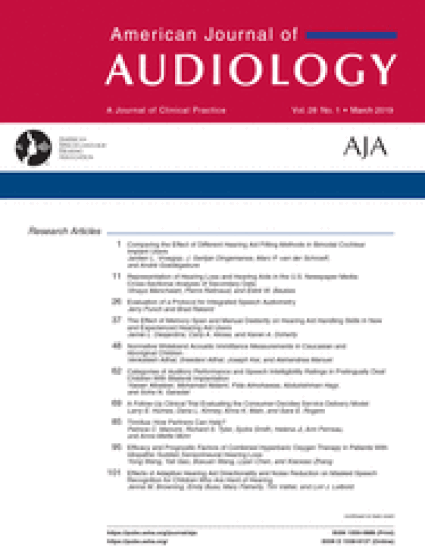
Article
Frequency Importance Functions in Quiet and Noise for Adults With Cochlear Implants
American Journal of Audiology
(2015)
Abstract
Purpose: Several studies have been devoted to understanding the frequency information available to adult users of cochlear implants when listening in quiet. The objective of this study was to construct frequency importance functions for a group of adults with cochlear implants and a group of adults with normal hearing both in quiet and in a +10 dB signal-to-noise ratio.
Method: Two groups of adults, 1 with cochlear implants and 1 with normal hearing, were asked to identify nonsense syllables in quiet and in the presence of 6-talker babble while “holes” were systematically created in the speech spectrum. Frequency importance functions were constructed.
Results: Results showed that adults with normal hearing placed greater weight on bands 1, 3, and 4 than on bands 2, 5, and 6, whereas adults with cochlear implants placed equal weight on all bands. The frequency importance functions for each group did not differ between listening in quiet and listening in noise.
Conclusions: Adults with cochlear implants assign perceptual weight toward different frequency bands, though the weight assignment does not differ between quiet and noisy conditions. Generalizing these results to the broader population of adults with implants is constrained by a small sample size.
Keywords
- Cochlear implants
Disciplines
Publication Date
December 1, 2015
DOI
10.1044/2015_AJA-15-0023
Publisher Statement
Copyright © 2015 American Speech-Language-Hearing Association
Citation Information
Sladen, D.P. & Ricketts, T.A. (2015) Frequency importance functions for adult cochlear implant listeners in quiet and in noise. American Journal of Audiology, 24(4):477-86
